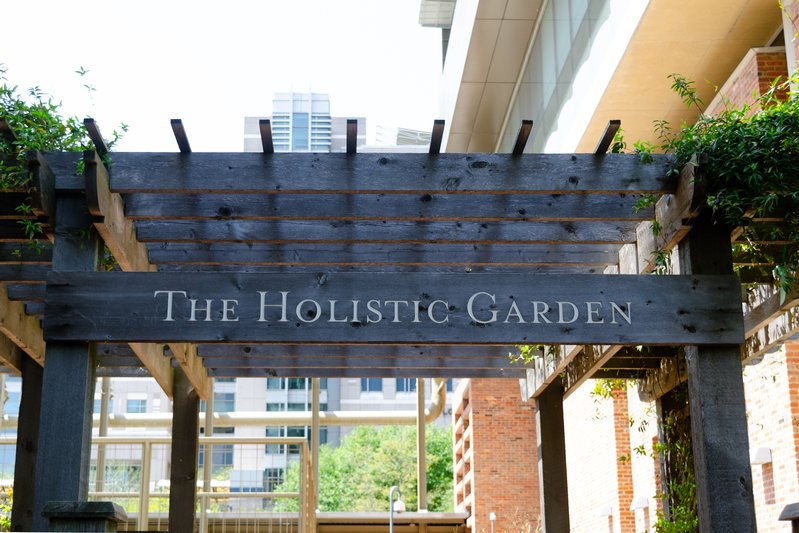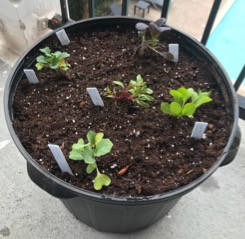Holistic Gardening
Nourishing Body and Spirit

Blog post by:
Megan Brown
UTHealth Dietetic Intern, MPH Candidate
The Holistic Garden
Have you ever visited the Holistic Garden at the School of Public Health?
Students at the School of Public Health tend the garden and learn to use gardening as an opportunity for better nutrition, regular exercise, and contemplation in a natural setting - all of which help to prevent or manage physical and mental health conditions.
The garden hours are currently limited due to COVID-19. We will follow the University’s policies concerning when to reopen the garden, and we hope that you can come visit at that time!
What is Holistic Gardening?
The holistic gardener works with the natural ecosystem to produce a whole that is greater than the sum of its parts. This might involve working organically with natural beneficial insects rather than inorganic pesticides, or designing a garden as a place for contemplation.
The fascinating beauty of nature allows the gardener an opportunity for peaceful meditation and moderate physical activity, reducing mental fatigue and restoring the mind and body. Thus, this interaction with nature is restorative for both the ecosystem and the gardener.
How to Make Your Own Container Garden
Do you want to garden, but feel like you don’t have time for it? Container gardens are a great way to grow your own herbs and vegetables—and interact with nature—with little time and effort, and they are ideal for those with apartment balconies or limited outdoor space.
Follow these steps to make your own container garden:

1. Container: Choose the size of your nursery pot according to how many plants you want. For example, the 7-gallon container pictured may hold 3-5 plants.
2. Soil: Fill the container with a general purpose growing medium, such as potting soil mix with peat, perlite, and sand for proper drainage. Choose organic soil if you wish to grow organically.
3. Fertilizer: Mix a couple of handfuls of multi-purpose fertilizer into the soil, and fertilize again every 2-3 months, or according to your fertilizer instructions. Choose organic fertilizer if applicable.
4. Plants: Choose seeds or seedlings of herbs and/or vegetables. Follow instructions on the labels for planting and amount of sunlight needed.
5. Water: Water every couple days or when the soil is dry. Water with about ¼ the volume of soil. For example, give your plants about 1.5-2 gallons of water if using a 7-gallon container.